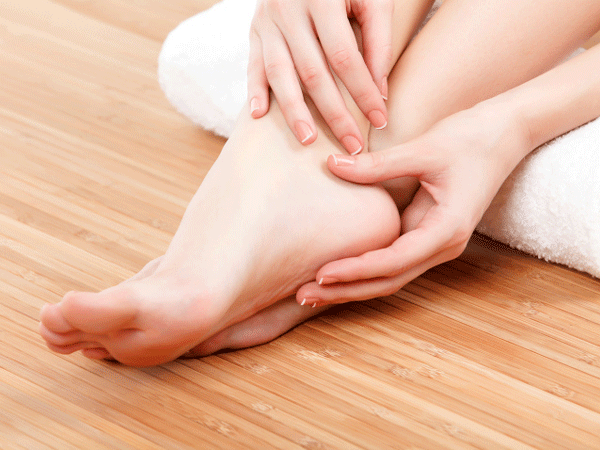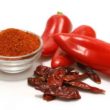Thanks to our feet, we’re able to get to some pretty cool places. However, when the humidity sets in, if you’re pregnant, or if you carry around a bit of excess weight, you might be the victim of swollen feet and ankles on a regular basis.
Luckily, along with resting your tender tootsies, there are plenty of effective home remedies to treat painfully swollen feet at home so you can get back out and enjoy the world.
1. Epsom Salt Soak
Epsom salts work magic on painfully swollen feet. And dissolving a few cups in your bathwater will do the trick on fatigued tootsies, calves, and ankles. If you don’t want to waste water on a full bath, you can always prepare an Epsom salt foot bath in a shallow bucket of water.
2. Yoga
Gentle exercises such as yoga postures can do much to encourage blood circulation, which will stop blood from pooling in certain areas like the feet and ankles. Yoga inversion postures that elevate the feet above the heart can also alleviate pressure and swelling on fatigued lower extremities.
3. Magnesium Supplements
If you suffer from painfully swollen feet, ankles and calves regularly, you may want to ask your health care provider if magnesium supplements might relieve pain. Oftentimes, a magnesium deficiency can contribute to inflammation of the feet.
4. Elevate your Tootsies
Inverted gravity can be a great ally to swollen feet and ankles. Try propping up your lower legs in bed using a pillow so that your feet are elevated above your heart and encourage fluid to drain away, and be absorbed, or eliminated (via urination) by the body.
5. Foot Massage
A foot massage is one of the best remedies for swollen feet and ankles. When you are on your feet all day long, blood flow is often restricted, causing fluid to pool in the feet. However, regular massage to the area can help encourage better blood flow in the lower extremities.
6. Hydrate
Oftentimes, just drinking more water throughout the day will help dilute sodium and caffeine, main contributors to lower inflammation. Drinking 8 to 10 glasses of water per day will help flush toxins out of the body. Try adding a few slices of lemon for the added anti-inflammatory benefits.
7. Essential Oils
Adding anti-inflammatory essential oils—such as peppermint, eucalyptus, lemon, or lavender—to your massage oil or bathwater will do much to relieve the pain and swelling in your feet and ankles.
8. Swimming
When you take a swim you are buoyant. It’s one of the few activities that don’t demand anything from our lower extremities. Taking the impact off of your feet, ankles, and calves during a 30-minute swim each day can lessen swelling and relive inflammation pain.
9. Support Hose
If you suffer from severe inflammation of the feet, calves, and ankles, your doctor may recommend using support or compression hose or stockings to prevent swelling and take some of the pressure off of your lower extremities. These may also help prevent blood from pooling and causing painful varicose veins from forming.
10. Avoid Salt and Caffeine
Reducing your sodium and caffeine intake can do much to alleviate fluid from forming in your ankles and feet. Both salt and caffeine are bad news when it comes to fluid retention, so try finding alternative sources of salt (i.e., dried seaweed or sea salt) and lowering your caffeine intake will relieve foot swelling.
By: Anna Fleet
Image credit: healthmeup.com













